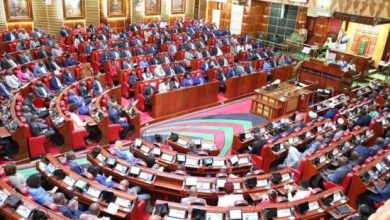Kenyan Shilling Weakens Against US Dollar After Months of Recording Gains

The Kenyan shilling weakened on Friday against the United States Dollar after weeks of strengthening against major global currencies.
The local currency weakened slightly against the greenbuck due to an increased demand for foreign currency by fuel importers and manufacturers.
As of Friday, September 13, the London Stock Exchange Group (LSEG) quoted Kenyan Shilling trading at 128.50/129.50 to the dollar, a slight dip from Thursday’s closing rate of 128.30/129.30.
An increase in dollar demand by importers seeking to carry out their trade on the international front impacted the forex market, leading to a slip in the local currency.
A man counting several one thousand Kenyan shillings bills.
Photo
Wilberforce Okwiri
However, despite the weakening, traders exuded confidence in the Kenyan currency noting that the local unit was within the range of stabilizing.
According to analysts who spoke to Reuters, the shilling was expected to strengthen in the coming week due to less dollar demand.
The shilling was broadly stable over the week mainly supported by dollar inflow from the recently floated infrastructure bond and the intervention by the central bank to ease the local unit’s volatility.
Kenya’s currency has been in its best form since the start of the year, gaining by about 17 per cent against global peers, according to a report by the Central Bank.
It was mainly boosted by the government’s decision to offset the Ksh310 billion ($2 billion) Eurobond and eased jitters among investors who initially doubted the country’s ability to repay the debt.
The shilling was also supported by the dollar inflows from agricultural exports mainly tea and coffee whose demand rose in 2024.
However, in July, the local currency was slightly hit following the decision by credit rating agencies including Moody’s and S&P to downgrade Kenya’s rating.
Moody’s downgraded the country’s credit ratings to “Caa1” from “B3” and projected Kenya’s debt affordability to remain weaker for longer.
“The negative outlook reflects downside risks related to government liquidity,” read part of a statement by the credit rating agency.
Moody’s Credit Rating Agency
Photo
Social Housing



